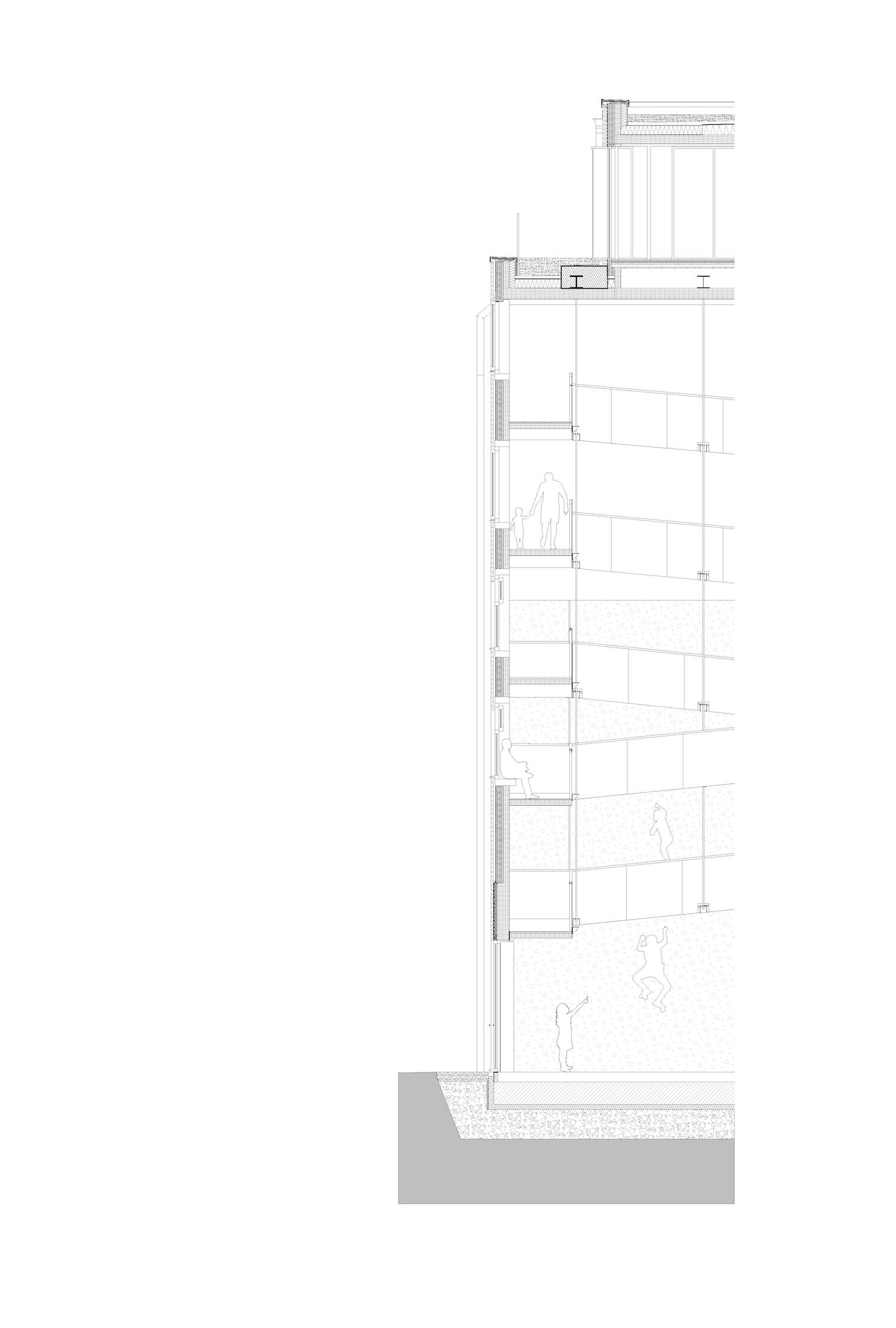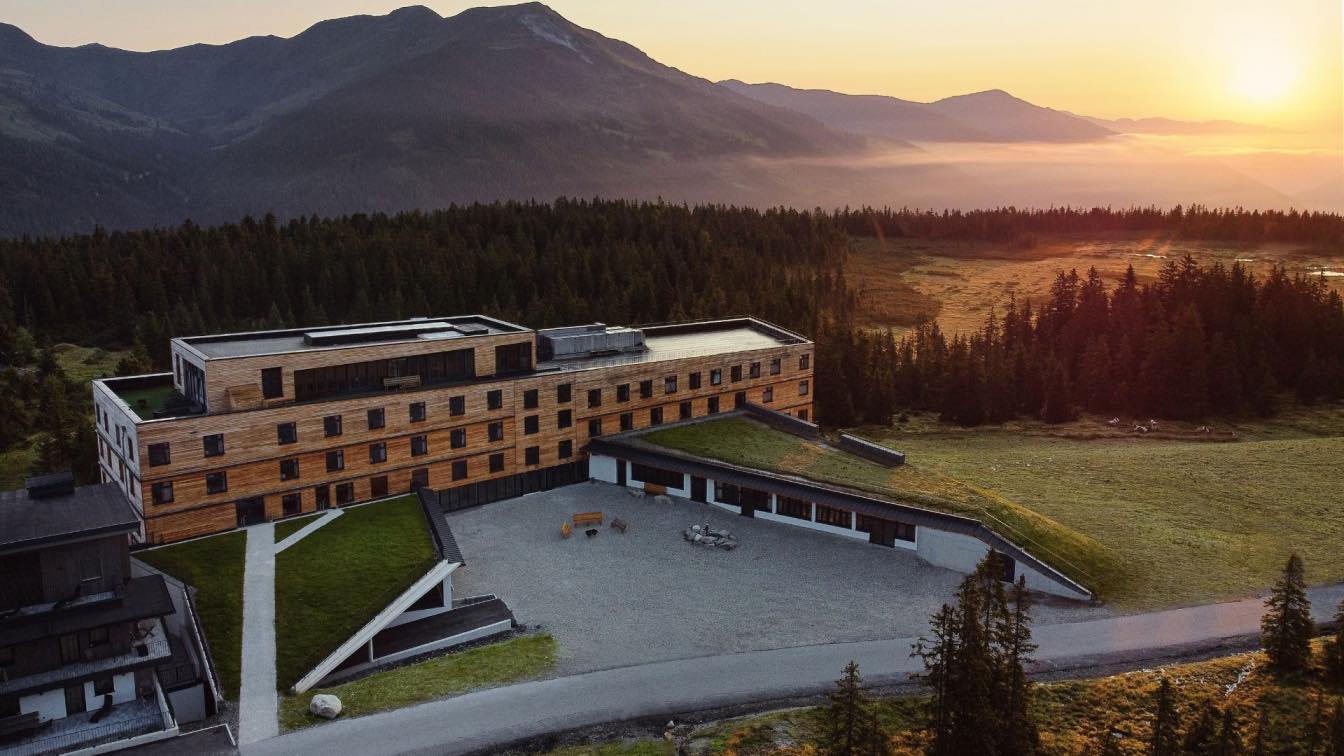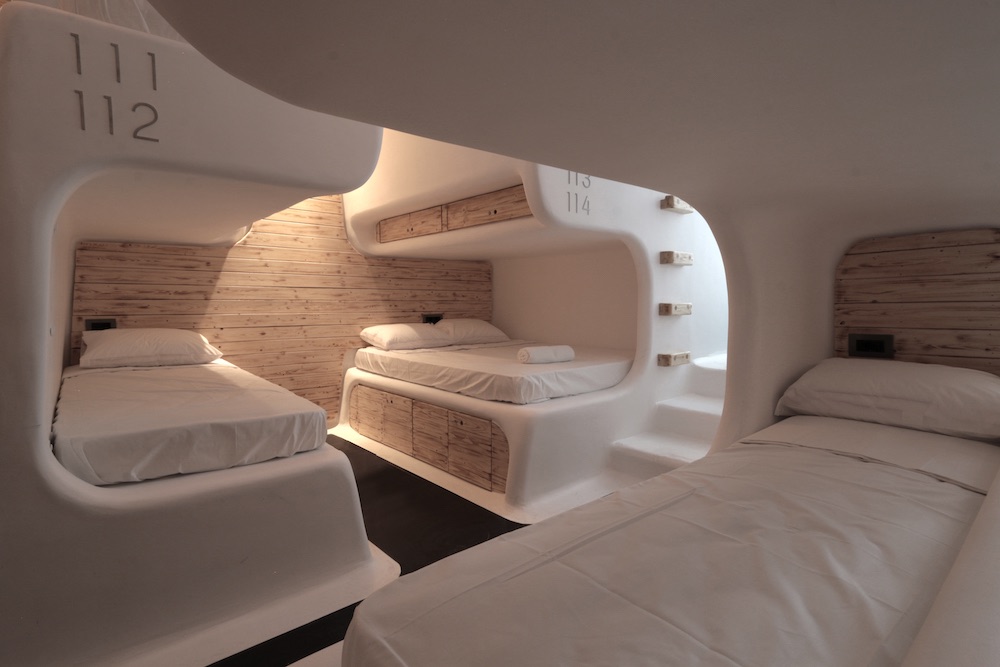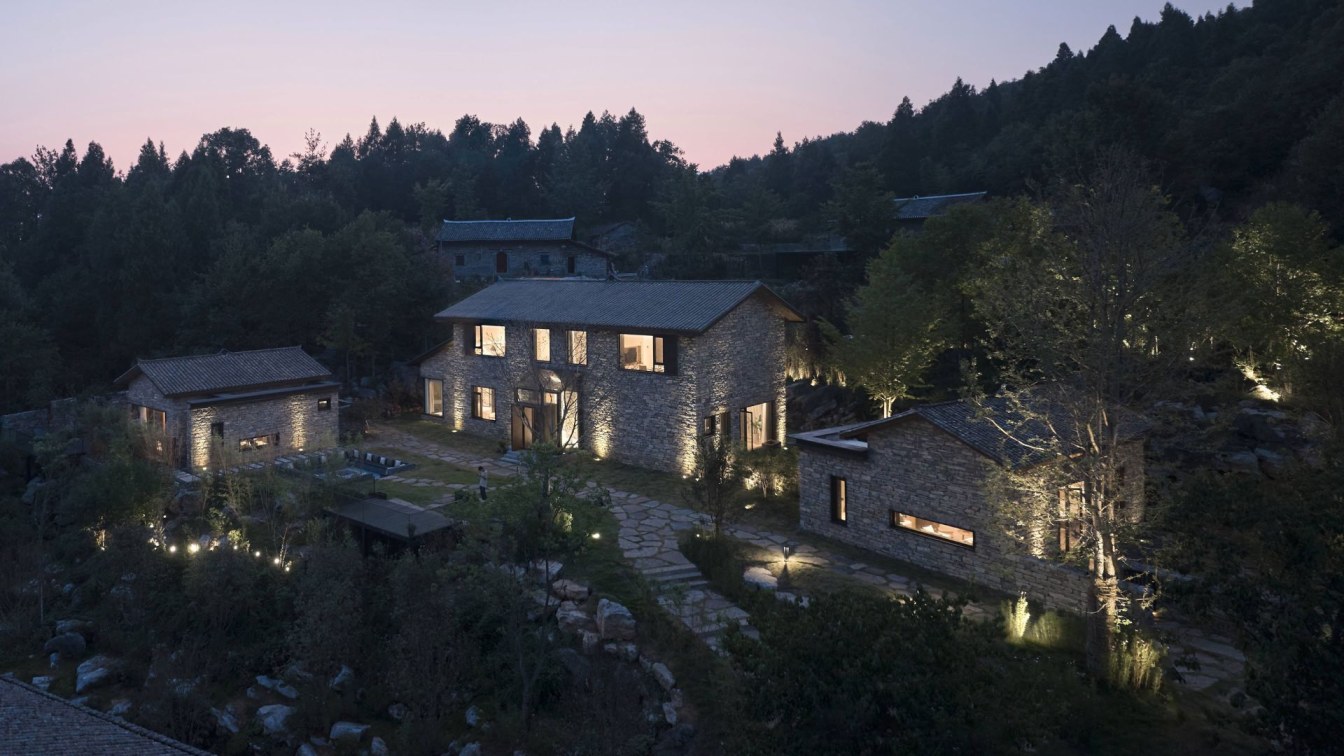Lechner & Lechner Architects: The "youthhostel Gerlos" is located in the Austrian Alps in the village of Hochkrimml at an altitude of 1700 meters. Skiing is firmly anchored in Austrian society and is part of school teaching. This project aims to make school trips in an ecological environment more affordable. That is why the hotel was built from regional wood in solid wood construction, the hotel is heated by biomass district heating, electricity comes from photovoltaic, the journey is not made by individual transport but mainly by coach and the leftover wood from the transport of the cross-laminated timber walls was processed into furniture.
The hotel has around 7500 m2 of usable square meters, around 450 beds and, for bad weather, around 2200 square meters of indoor sports areas such as a climbing wall, a gym and much more. The youth hostel creates a center in the village with its spatial arrangement and leisure activities.

Architectural and landscape design
The main structure of the youth guest house is designed as a longitudinal structure in timber construction. The urban and spatial intention is to create a south-facing U-shaped “village square” between the main building and the street, which functions as a mediating semi-public zone between the youth hostel and the surrounding buildings. This square is accompanied by two side wings at ground level, which are spatially differentiated towards east and west as a landscape wave and allow the square to sink into the landscape as a cut in the terrain. In concrete terms, this means that these two parts of the building that accompany the village square are poured into the landscape and then planted with greenery. They merge with the environment. When you approach the youth hostel, it appears as a simple wooden structure.

Interior conception
Access to the main structure is through a single-storey area that is glazed over the entire width from the village square. The height of this area corresponds to the poured-in wings of the building that flank the village square and allows the main structure to float like a bridge over the village square. Spatial complexity arises when approaching the building. As you delve deep into the landscape along the course of the village square, more and more views of the lower-lying landscape emerge through the main building. This takes place through numerous air spaces between the floors, which give the simple structure a visual permeability on closer inspection. The ground floor on the level of the village square contains the foyer, from which the floors are accessed with ramps. This access is positioned centrally over the entire width of the longitudinal structure and extends the space of the foyer vertically through the air hole in the middle of the ramps. The vertical of the ramp access and the numerous air spaces between the floors develop a spatial symbiosis and enable rich transverse views to a three-storey climbing wall that starts in second basement level at the sport area.































